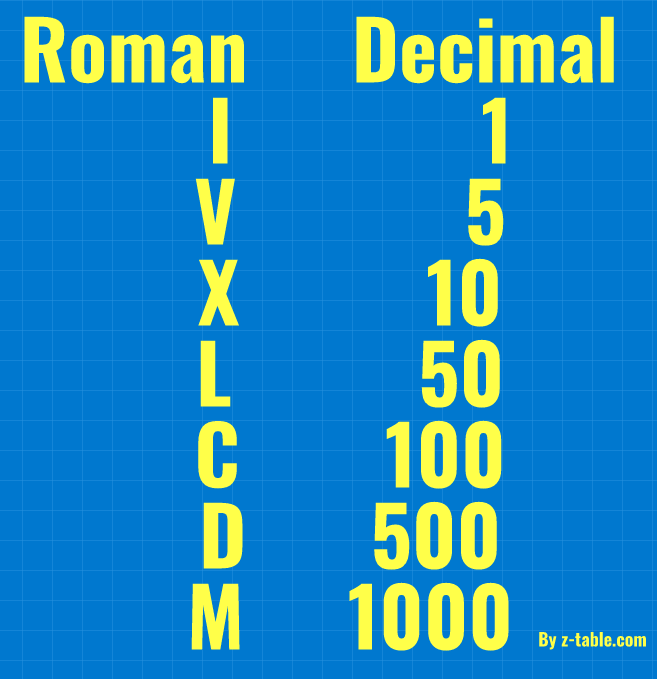What is CXCII Roman Numerals?
CXCII represents the number 192 within the Roman numeral system. This representation merges the Roman symbols C (100), XC (90), and II (2). By summing these symbols, we obtain CXCII, which translates to 100 + 90 + 2 = 192. In this article, we will venture into the intricacies, foundational principles, and intriguing tidbits related to CXCII in Roman numerals.
Sometimes conversion of Roman Numerals can be a daunting task, especially for larger numbers. You can always use a Roman numerals converter if you need to quickly convert Roman numerals to decimal numbers .
Sometimes conversion of Roman Numerals can be a daunting task, especially for larger numbers. You can always use a Roman numerals converter if you need to quickly convert Roman numerals to decimal numbers .
Composing CXCII in Roman Numerals
To articulate the number 192 using Roman numerals, one fuses the symbols C (100), XC (90), and II (2). This combination yields CXCII.
| Roman Numeral | Value |
|---|---|
| I | 1 |
| V | 5 |
| X | 10 |
| L | 50 |
| C | 100 |
| D | 500 |
| M | 1000 |
Key Principles for Writing Roman Numerals
Accurate construction and interpretation of Roman numerals hinge on a comprehensive understanding of their core principles:
- Addition: Numerals placed in descending order denote the sum of their values. In the case of CXCII, this results in C + XC + II = 100 + 90 + 2 = 192.
- Subtraction: Occasionally, a smaller numeral is positioned before a larger one to indicate subtraction. However, this rule isn't applied in the formation of CXCII.
- Repetition: A numeral can be reiterated up to three consecutive times to indicate cumulative value.
- Limit on Repetition: A numeral should ideally not be repeated over three times in a row.
Adjacent Numerals to CXCII
To grant a more comprehensive understanding, let's consider the numerals that immediately surround CXCII:
- CXCI = 191
- CXCII = 192
- CXCIII = 193
CXCII Roman Numerals Trivia
- The numeral 192 is an even number.
- CXCII, when observed closely, showcases the concept of repetition in Roman numerals, as evident in the repeated use of the numeral I.
Example Problems Featuring CXCII
Addition: What total do you arrive at when CXCII is added to VIII?
Answer: CXCII (192) + VIII (8) = CC (200).
Subtraction: What do you obtain when XCII is taken away from CXCII?
Answer: CXCII (192) - XCII (92) = C (100).
Multiplication: What is CXCII multiplied by III?
Answer: CXCII (192) * III (3) = DLXXVI (576).
Division: What quotient arises when CXCII is divided by IV?
Answer: CXCII (192) ÷ IV (4) = XLVIII (48).
Answer: CXCII (192) + VIII (8) = CC (200).
Subtraction: What do you obtain when XCII is taken away from CXCII?
Answer: CXCII (192) - XCII (92) = C (100).
Multiplication: What is CXCII multiplied by III?
Answer: CXCII (192) * III (3) = DLXXVI (576).
Division: What quotient arises when CXCII is divided by IV?
Answer: CXCII (192) ÷ IV (4) = XLVIII (48).
CXCII Roman Numerals FAQs
How would CXCII appear in lowercase Roman numerals?
Answer: Using lowercase, CXCII becomes cxcii.
Can there be an alternative representation of 192 in Roman numerals other than CXCII?
Answer: No, CXCII remains the exclusive representation for the number 192 in Roman numerals.
Which Arabic numeral is synonymous with CXCII?
Answer: CXCII corresponds to the number 192.
How can one swiftly convert CXCII into its Arabic equivalent?
Answer: Recognizing the individual and combined values of the symbols in CXCII instantly reveals its representation of 192.
Answer: Using lowercase, CXCII becomes cxcii.
Can there be an alternative representation of 192 in Roman numerals other than CXCII?
Answer: No, CXCII remains the exclusive representation for the number 192 in Roman numerals.
Which Arabic numeral is synonymous with CXCII?
Answer: CXCII corresponds to the number 192.
How can one swiftly convert CXCII into its Arabic equivalent?
Answer: Recognizing the individual and combined values of the symbols in CXCII instantly reveals its representation of 192.
CXCII offers a clear window into the Roman numeral system's capacity to combine different symbols for capturing distinct numerical values. By mastering the essential principles that govern this system, we can unlock the mystery behind each Roman numeral, weaving a tapestry of historical nuance and mathematical precision. Engaging with CXCII broadens our horizon, offering a lens into the fascinating realm of Roman numerals and their timeless allure.
To learn more about Roman numerals visit our comprehensive Roman numerals guide. For any other math and statistics related resources check out z-table.com.
To learn more about Roman numerals visit our comprehensive Roman numerals guide. For any other math and statistics related resources check out z-table.com.

